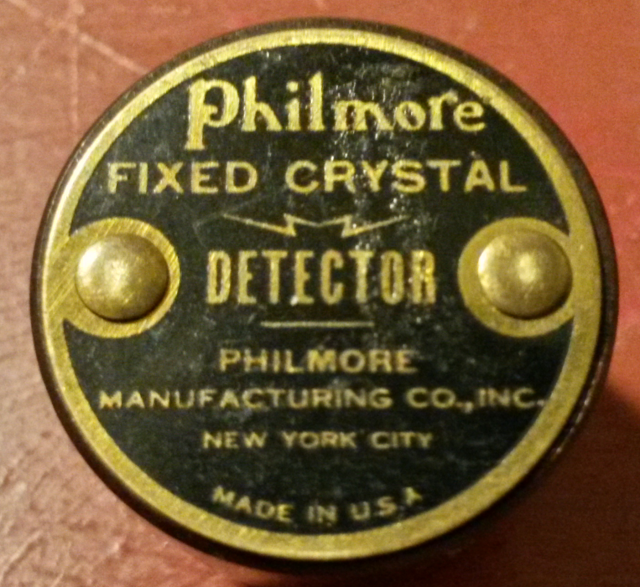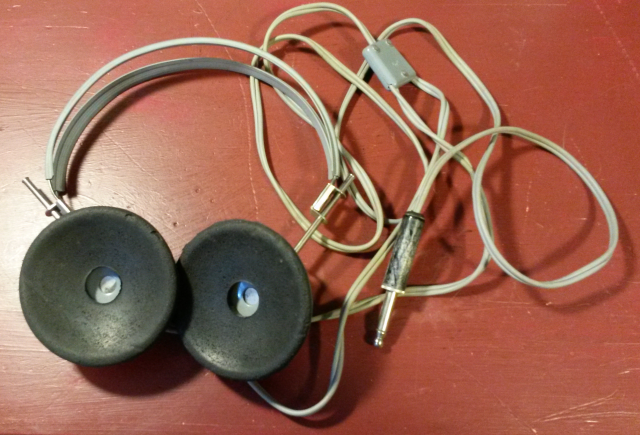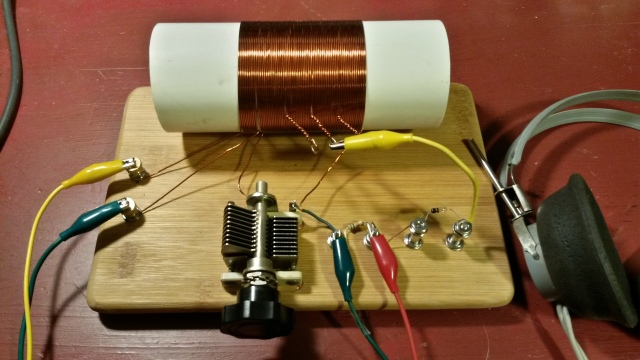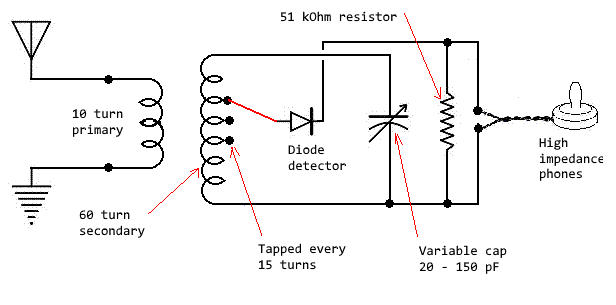Happy New Year.
Now that the holidays have passed and time has started to free up a bit, I’ve found my way back to the bench and started to resume experiments on a space charge tube regen, And while I actually have some interesting progress to report on that front, I’ve been sidetracked into completing a completely unrelated project by yet another random sequence of events.
This one started, as they often do, with an eBay purchase. I probably shouldn’t be telling you this, but I will sometimes bid on a lot of several crystals, if there are at least a few I can identify as being on useful ham frequencies. If the average price per crystal is attractive I’ll go for it.
Out of band FT-243’s are also useful because the holders can be filled with modern HC49/U or similar crystals. I sometimes find crystals at frequencies just below the ham bands. These can (in theory, I have never actually attempted it) be ground down to raise their frequencies a few hundred Hertz, to values that fall in-band.
Of course, I get a lot of fairly useless stuff as well. There may be a few interesting holders, or items that might have antique interest, but for the most part the rest is of no use and collects in a bin on a shelf in the basement.
This particular lot contained a curious item: a sealed detector crystal for a crystal receiver set.

The mysterious Philmore Fixed Crystal DETECTOR
These holders contained a hunk of galena and a cat’s whisker (short, stiff, wire probe) sitting on a “hot spot” on the galena, potted in a plastic holder to permanently secure the detecting action needed in a crystal set. This was a modern convenience compared to the tricky business of finding a “hot spot” that would detect. The really cool thing about these crystal receivers is that they produce audio with no additional input power. All the energy necessary to produce the audio is captured by the wire antenna.
It was a curious artifact, and I put it on a shelf on my operating desk, as a radio good luck talisman; but everytime I spied that crystal dector sitting on the desk, I wondered to myself whether it still worked. I would not have gotten much past the wondering stage were it not for the fact that I happen to have a pair of high-impedance headphones – a critical component in any crystal receiver experiment.

High Impedance Headphones
These phones were given to me by my elmer, W2WTV Gordon (sadly a silent key now for many years). I recall visiting him one Saturday while he was cleaning up in his shack, and him handing these phones to me, saying gruffly “Here take these, you might want to build a crystal radio someday.” I held on to them ever since, not knowing when if ever I would want to build a crystal radio, but they just seemed like something you shouldn’t part with, because they’d be difficult to get a hold of if the need ever arose. I measured the DC resistance of these to be about 2200 Ohms.
So almost against my will, I started to research crystal radio designs. Some of these babies can get very elaborate, after all at one point they were state of the art. There are dozens of designs out there, and I started to filter through them. Patterns began to emerge.
I decided on a variation of the simple “oatmeal box” receiver. Easy to build, it requires a big air wound transformer (hence the oatmeal box) connected to the antenna, a resistor, a variable capacitor, a diode detector, and high-impedance phones.
I was all set, I had all that stuff on hand. I decided to go a little uptown from the oatmeal box, and wound my coil on a piece of 2 inch PVC pipe. Also, I used one of those cheap, ecologically responsible bamboo cutting boards for a base. I think these things are great for any “bread board” project, the small ones cost about five dollars in the produce department of the local supermarket. Easy to drill, and good looking. What’s not to like?
This past weekend, I got to work. Not that there weren’t about twenty more pressing things I should have been doing, but by this point my curiousity about the detector was approaching obsession. First step: recompute the number of turns needed on my piece of pipe, by reverse engineering the oatmeal box design.
Using an online air wound coil calculator, I estimated the inductance of the oatmeal box secondary to be about 500 microHenries, and then calculated the number of turns I would need on the pipe for the same inductance. Using 28 AWG gauge wire, it worked out to be about 100 turns. Sitting down to binge watch old PBS shows, I started winding.
I won’t bore you with the details of winding the coil. I know a lot of guys don’t like winding toroids – this was far, far worse than any toroid. 28 gauge wire is impossible to handle. It was a nightmare. Finally I got the coil done, and measured the inductance. More than twice the calculated value. This thing wasn’t going to resonate any where near the AM broadcast band.
Re-purposing some nice 18 AWG gauge enameled copper wire liberated from my wife’s studio, I wound a second coil of 60 turns, tapped as indicated in the design. Much better experience all around. I don’t recommend using teeny wire for this kind of project.
Taking much more time than it should have, I laid out the components on the cutting board. I didn’t have the specified 47 kOhm resistor, so I used a 51 kOhm instead. Nothing about this design struck me as being all that critical, so I figured close was good enough. With everything wired up, I brought my creation up to the shack, and hooked to my antenna.

Attached to the antenna (new diode)
The antenna is a 135 foot doublet, fed with ladder line, with a bunch of stuff between the wire and the shack, like a big balun and an automatic tuner. But since rf does demonstrably get in through this pathway, I figured it might work for the crystal receiver. I hooked the center pin of th PL-259 connector to the top of my coil, and the shell to the ground side. Hooked up the phones, and spun the dial….
Profound silence.
I tried all the taps. No good.
Okay, back to the design docs.

Schematic for my version.
After carefully reviewing the small schematic for the rig I realized I had flipped the sense of the secondary. Could phase matter? Well, just to be sure I switched two soldered connections, and now my construction exactly matched the schematic. Back to the shack, hooked up the alligator clips, and…. nada.
Okay, well it could be the phones – I had never tried them in any other circumstances. Or, it could be my antique crystal detector. I popped the old unit off, and stretched a brand new 1N34 diode across the posts. Connections hastily reconnected, tuned the cap on one tap, then the next… wait, what was that? Yes, faintly, distantly, but unmistakably – salsa music!
I ran downstairs and got my son to come up and listen. He put on the phones, concentrated for a moment, and said “Sounds like a Spanish language station?”
Yes! Success! A soft, vague whisper, but reception nevertheless! My receiver works, and the question answered: the antique crystal detector is a curio only, dead as a doornail.
A little further experimentation reveals that the phase of the coils does matter – switching the antenna and ground connections completely killed the signal. Playing with the receiver late in the evening, I was able to hear four or five distinct stations, but none as strong as my Spanish station, which turns out to be WEPN, ESPN Deportes on 1050 kHz AM in New York.
Switching between taps improves selectivity and reduces sensitivity as fewer turns are selected. I probably could get better reception with a good earth ground and a more direct connection to the wire, but those experiments will wait for some other time. For the time being, I am at peace with crystal radios.
Now about the space charge tube regen receiver. I have found an interesting design that I think will adapt nicely to space charge tubes, and I have prototyped the input RF amp with encouraging results. But this will be the subject of another post. Until then
73
de N2HTT


